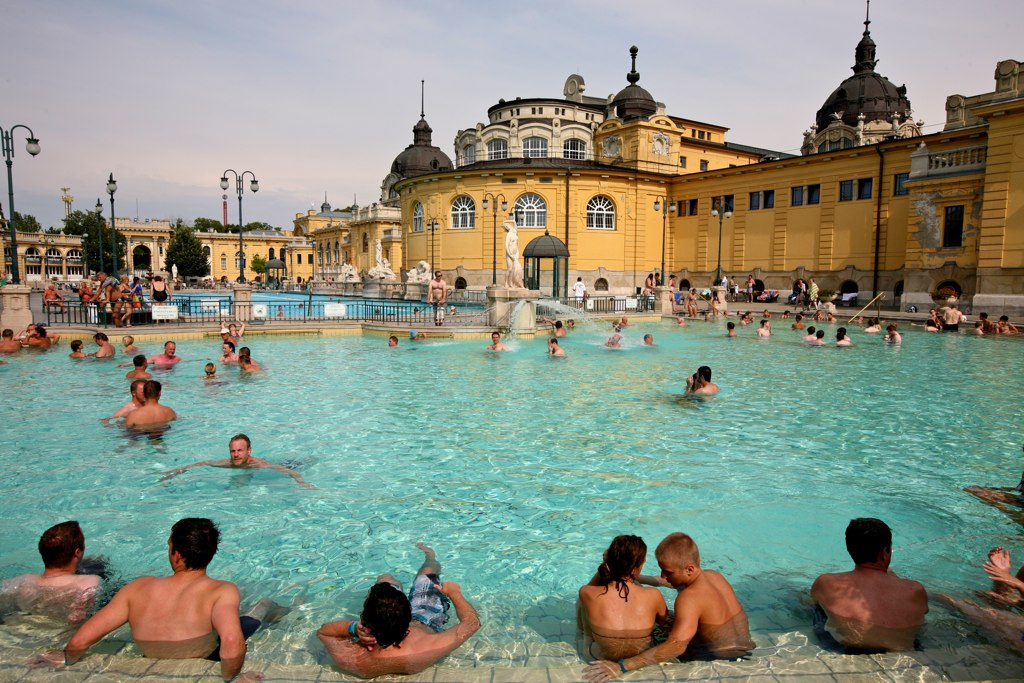The rejuvenating geothermal spas of Hungary

Széchenyi Medicinal Bath in Budapest, Hungary (source: flickr/ Alex E. Proimos, creative commons)
Interesting article excerpt on the geothermal spas of Hungary.
The Romans first took advantage of the waters’ curative and relaxing effect in the first century AD, and ruins of their ancient baths have been found in the Obuda section of Budapest. In the 16th and 17th centuries, Hungary was occupied by the Ottoman Turks, who established Turkish bath houses along the banks of the Danube River in Budapest—where the river water’s interaction with a geological fault results in an especially high concentration of thermal springs. Several of the facilities founded during the Ottoman occupation are still in use to this day.
While numerous amenities are available at most Hungarian baths—including foot and body massages, aromatherapy treatments, pedicures, and more—the prime activity is to simply enjoy the waters in outdoor and indoor pools, steam rooms, and saunas. The water emerges from the springs at temperatures ranging from 70 degrees Fahrenheit to nearly 170 degrees (20 – 77 degrees C), depending on the spring. Chemically, notable deposits of calcium are present in Budapest’s thermal waters, along with traces of magnesium bicarbonate, sulphate chloride, fluoride ion, and sodium.
One of the most popular of Budapest’s baths is the Gellert Spa, which is located next to the Gellert Hotel. The springs here have been in use since the 13th century, with the current spa built in 1918, and features impressive Art Nouveau architecture and intricate tile work. There, you can enjoy the use of many indoor and outdoor baths, invigorating steam rooms, and the sauna.
In addition to a soothing soak, whichever spa you choose to visit will provide a memorable cultural experience. The locals and fellow visitors are congenial and welcoming. You’ll find that observing the families, couples, and friends who gather regularly to recharge amidst the thermal waters is nearly as engaging as the waters themselves.